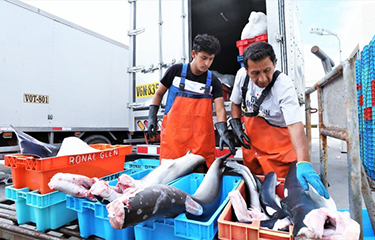Peru preparing national fisheries policy to make industry more competitive by 2030

Peru’s Production Ministry (PRODUCE) is working to establish regulations for the country’s first-ever national fisheries policy, which aims to position Peru’s fishing industry as more competitive and sustainable by 2030 and address food security issues, among other goals.
PRODUCE will begin the process with a diagnosis of the fishing sector, based on which long-term strategies and action plans will target the entire seafood value chain, including artisanal fishers, shipowners, processors, purveyors, and consumers, Peru Production Minister Raúl Pérez Reyes said in a press release.
“The main objective of the national fisheries policy is to make fishing more competitive, leading to an increase in exports of value-added hydrobiological products, new technologies to improve extraction and processing, as well as the creation and improvement of infrastructure such as artisanal fishing whar[ves],” he said.
Such value-added fishing products contributed PEN 4.57 billion (USD 1.27 billion, EUR 1.15 billion) to the Peruvian economy in 2022, representing 0.8 percent of national GDP, PRODUCE stated, while fish exports brought in USD 4.09 billion (EUR 3.72 billion), comprising 6.9 percent of Peru's total exports last year.
The move to draft a national fisheries policy comes shortly after the 20 May publishing of a modification to the country’s existing general fisheries law. The modification, published in Peru’s official daily newspaper, El Peruano, recognized traditional artisanal fishing as a distinct category and promoted fishing preservation within five nautical miles of Peru's coastline.
That law first received approval in 1992; since then, it has undergone modification three times.
According to Percy Grandez, maritime governance legal specialist at the Peruvian Society for Environmental Rights (SPDA), the latest version of the law covers five key topics: protecting ...
Photo courtesy of PRODUCE





Share